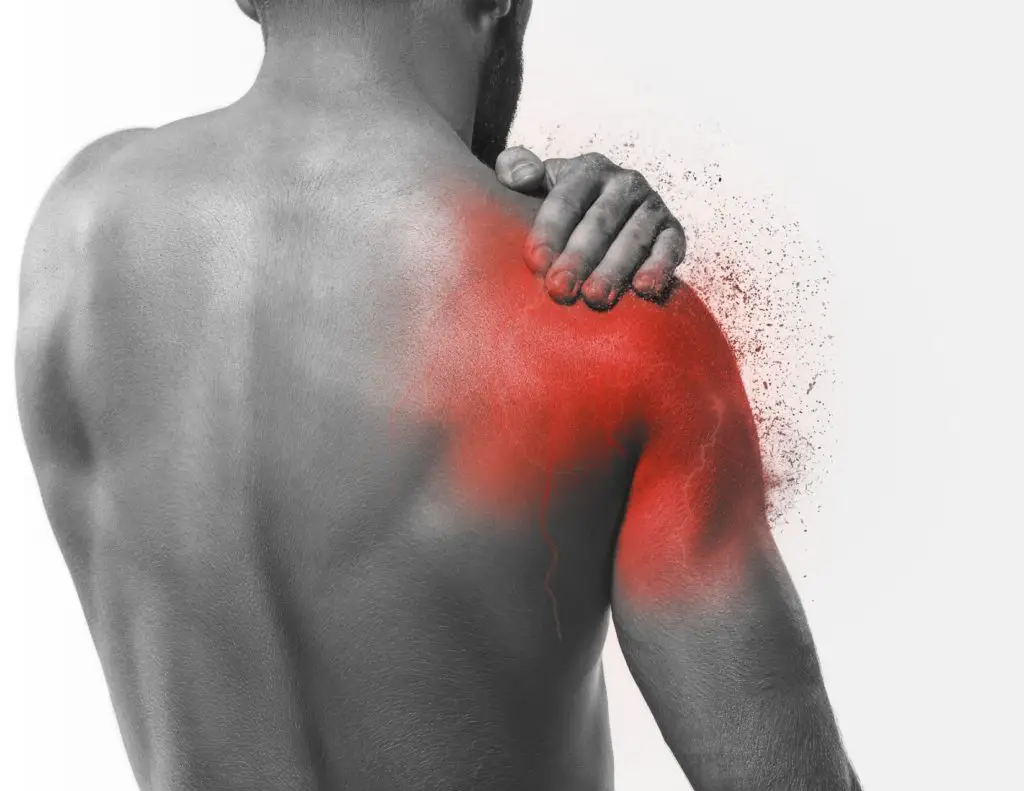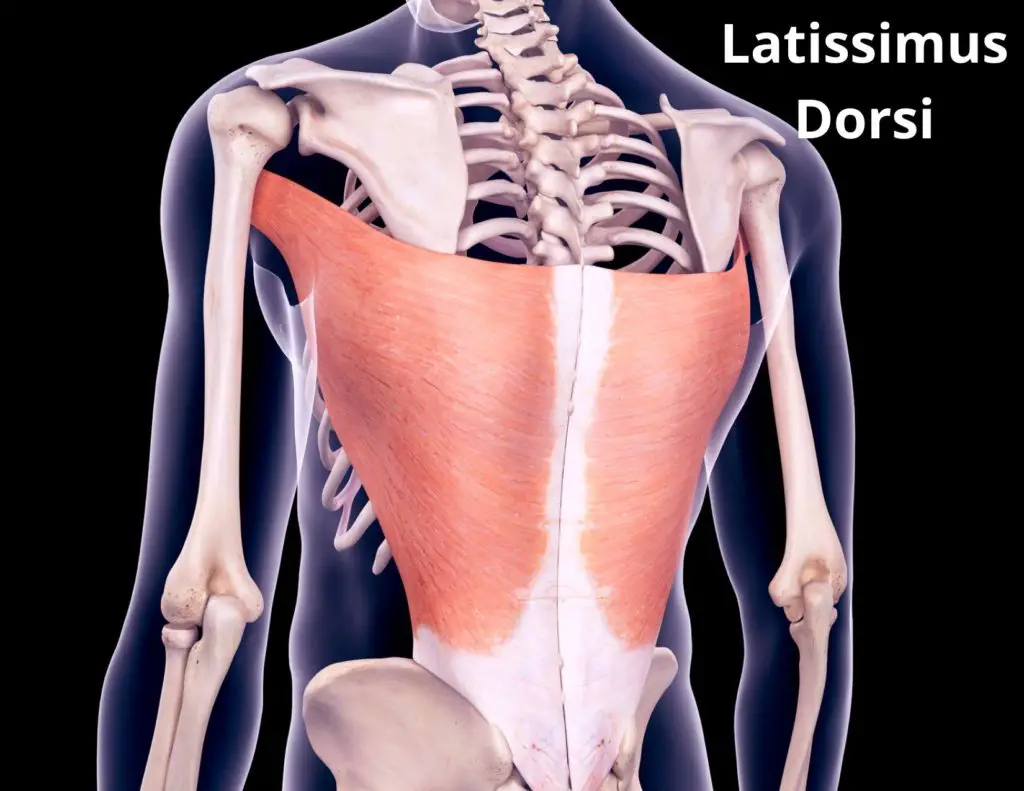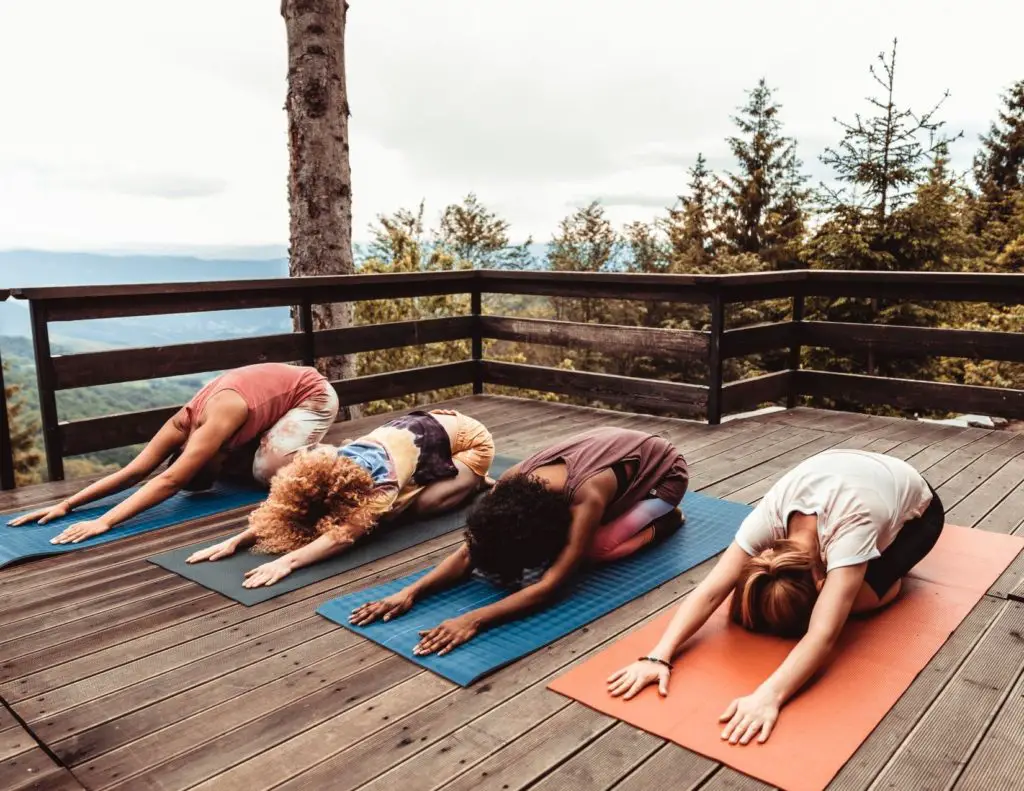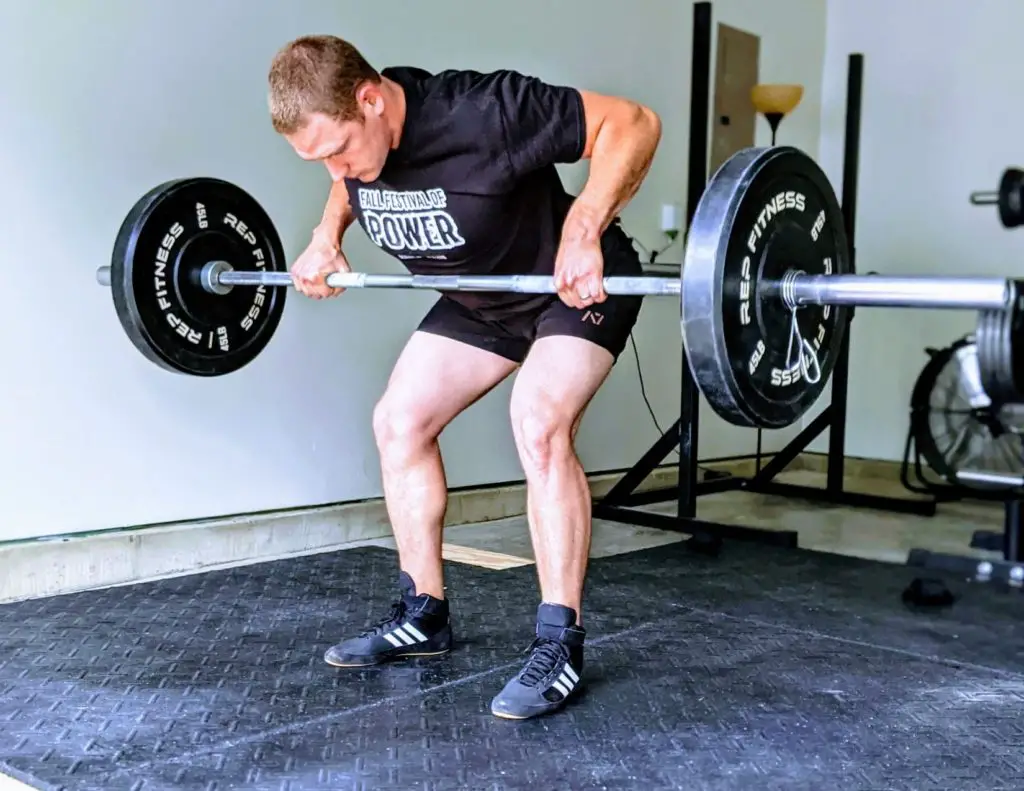Imagine you’re crushing it at the gym. You knock out dozens of pull-ups in your Wednesday workout. Then on Friday, as you’re warming up for heavy deadlifts, sharp pain shoots through the back of your shoulder.

You realize it’s a latissimus dorsi muscle strain. So you get physical therapy treatment and deadlift pain-free just one week later.
Last month, this happened to me.
In this article you’ll learn the symptoms of latissimus dorsi pain, how this muscle gets injured, and the best treatments for a quick recovery.
Symptoms
An injury to the latissimus dorsi muscle, also known as the lats, produces pain at the back of the shoulder and the base of the shoulder blade. Tight spots in the latissimus dorsi may also cause low back soreness and mid back pain. In some cases, the lats refer pain down the arm and into the hand.

Overuse injuries, poor posture and acute injuries cause trigger points (tight spots) in the latissimus dorsi muscles. Trigger points are taut, palpable, tender points within the muscle that cause local discomfort and frequently refer pain to other areas. In the case of the lats, trigger points cause referred pain in the areas shown above.
Muscular pain is reproducible by palpation and applying direct pressure to the injured area. A skilled physical therapist uses pain reproduction (via palpation, movement, muscular contraction, etc.) to confirm the symptoms’ source.
For example, I confirmed my recent latissimus dorsi injury in two ways. First, palpating my lats recreated my shoulder symptoms. Second, extending my shoulder against resistance reproduced the familiar shoulder pain–shoulder extension is the lats’ primary action.
Anatomy
The latissimus dorsi is one of the largest muscles in the body. It spans the width of the middle back–from the thoracolumbar fascia in the lower back to its insertion on the front of the humerus (upper arm). It also attaches to the iliac crest, thoracic vertebrae, and ribcage.

The thoracodorsal nerve (C6-C8) powers this large muscle. Its signature “V” shape widens the back. Strengthening your lats is like drinking Red Bull–it gives you wings.
The latissimus dorsi powerfully extends and internally rotates the shoulder joint. Think of reaching behind you to wash your lower back, slide your arm into a jacket or (on a bad day) get handcuffed. Reaching behind the back requires extension and internal rotation at the shoulder, both performed by the lats muscles.

Along with the rhomboids and trapezius muscles, the lats play a vital role in pulling and rowing exercises. The lats also stabilize the trunk during overhead activities, bring the upper arm down to the side (shoulder adduction) and assist with breathing.
Given the muscle’s function, it’s logical that overhead athletes and active adults experience latissimus dorsi pain.
Latissimus dorsi injuries commonly affect:
- Swimmers
- Rock climbers
- Tennis players
- Weightlifters
- Rowers
- Baseball players
- Gymnasts
Treatment
I could give you the generic R.I.C.E (rest, ice, compress, elevate) prescription and call it a day. Or simply say you need to stretch more (you probably don’t).
But I won’t. Instead, enjoy this curated list of specific exercises to relieve latissimus dorsi pain.
Stretching
Generally, I’m not a fan of stretching. However, gentle mobility exercises preserve range of motion and prevent an injured muscle from healing in a shortened position.
Mobility work is especially important for the lats, which are fully stretched with the arms overhead, a rarity in daily life. Plus, gently moving tight muscles coaxes the brain out of “fear and protect” mode, reducing the likelihood of chronic pain.
Child’s Pose
This simple yoga pose lets you ease into lat dorsi mobility work.

Start on your hands and knees. Slowly sit back onto your butt, reaching your arms overhead. It’s normal to feel a stretch underneath your armpits in the lats. Work into a mild to moderate stretch. For a bonus stretch, move the hands away from the painful side, stacking the hands.
Banded Shoulder Flexion
This lat-lengthening beauty is my favorite shoulder mobility drill from the Becoming a Supple Leopard book, a classic in the mobility world.

Use a resistance band, with one end attached up high and the other end around your wrist. Slowly stretch into shoulder flexion by dropping the chest towards the floor.

Avoid pain, working into a moderate stretch. Perform it standing, kneeling or sitting–dealer’s choice.
Soft Tissue Treatment
Muscle pain responds well to manual therapy, dry needling and massage therapy. Dry needling played an important role in my quick recovery–I had my latissimus dorsi dry needled 4 days after the injury.
Latissimus Dorsi Release
Using a tennis ball or a lacrosse ball, lean into a sturdy wall, and apply pressure to the sorest area of the muscle.

For bonus points, raise and lower your arm to intensify the mobilization. This technique “hurts so good” and helped me heal rapidly. Grab a lacrosse ball here:

Percussion Therapy
Massage guns are one of the hottest fitness trends right now. And for good reason! I use percussion therapy in the PT clinic to reduce muscle tone and alleviate patients’ pain. It’s my patients’ favorite treatment.

There are many percussion therapy tools you can use. Here are 3 great options:
Theragun PRO
This is a top-of-the-line massage gun. It comes with 6 different attachments and a rotating arm for easy ergonomics. It feels amazing on sore, tight muscles. Plus, it’s a quiet model with preloaded routines.

It’s easy on the body, less so on the wallet. Check the price here.
Hypervolt Plus
I use the Hypervolt in the PT clinic. My patients love it. It has 3 speeds and 5 attachments. The battery last up to 3 hours between charges.

At half the price of the Theragun Pro, it’s a sturdy, high-value option. See it on Amazon here.
Renpho Massage Gun
This one is a budget-friendly option for giving your muscles some TLC. Plus, it’s rated 4.6 on Amazon (over 26,000 reviews) and comes with 5 attachments.

Strengthening
At the end of the day, beefing up the lats is the best way to fortify them against injury. Weak muscles put you at a greater risk of injury.
Straight-Arm Row
Using a band or cable machine, hold the handle in front of you and pull down to your pocket, keeping your arm straight. Hold momentarily before returning to the start position.

This exercise proved pivotal to my recovery. I pushed through more pain than advisable, but my shoulder felt looser and stronger after 3 sets of 15, several days post-injury.
Lawnmower Row
The technique is simple–it’s just like starting a lawnmower.

Common sense is crucial when recovering from a muscle injury. If your heaviest row ever is 80 lb, don’t try 85 lb your first day back in the gym after a lat injury!
Light lawnmower rows let you strengthen the lats and test the waters before hammering out scores of pull ups. Try several sets of 10 to 15 reps.
Barbell Row
Last but not least, barbell rows beef up the lats and surrounding back muscles.

Like lawnmower rows, employ common sense when choosing the weight for this exercise. Doing “too much, too soon” is the fastest way to re-injure a healing muscle.
Prognosis
Most muscle injuries heal on their own because muscles have excellent blood perfusion which accelerates healing. The severity of muscle injury determines the recovery time. A mild strain (like what I experienced) can heal in a few weeks, while a tendon tear takes months to rehabilitate.
If you’re nursing a latissimus dorsi injury, go to physical therapy and get professional guidance through the healing process. Most latissimus dorsi muscle strains don’t require surgery or advanced imaging, but a shoulder MRI may be indicated if conservative management (i.e. physical therapy) fails.
How have you dealt with latissimus dorsi pain? Let me know in the comments.
For more recovery insights you won’t find anywhere else, join the free, fast-growing Facts & Physio Newsletter. Plus, get The Recovery Checklist when you sign up.

